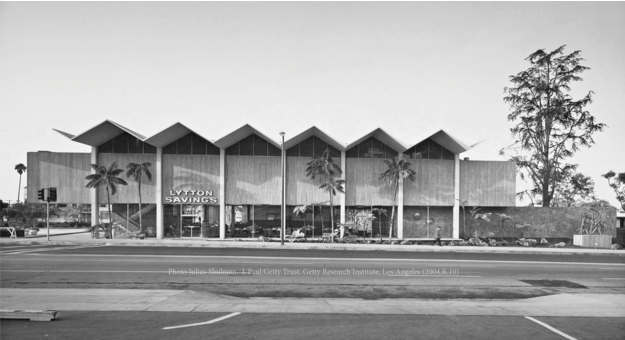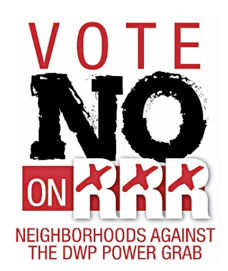Coming Together on Infrastructure Spending, Falling Apart on Unintended Consequences
TRANSPORTATION POLITICS--It's no secret that taxpayers want their transportation, energy, communications and other infrastructure paid for, and built ASAP. It's probably also no secret that the era of bipartisan discord on infrastructure prioritization is coming to an end. But the 800-pound gorilla in the room is how spending will occur, and whether it'll lead to solutions or new problems.
Both Hillary Clinton and Donald Trump have proposed dramatic new spending proposals on infrastructure. Matt Bai has opined on Yahoo that Clinton is a champion of infrastructure, but wishes she would be more specific about her vision on how to best spend that money. Americans need that specificity.
On the other side of the political aisle, Republicans wisely (if not decades too late!) chose to shed their reticence to spend on infrastructure--and much of Trump's appeal in the primaries to GOP voters was his unabashed desire to spend big (nearly twice that of Sect. Clinton) on infrastructure. Whether his willingness to take on new debt to do that is acceptable is another thing altogether.
But for years, we've had the problem of consensus over what a good investment in infrastructure is, and how best to pay for it. President Obama had the opportunity to spend well in his stimulus package, but despite some modest victories spent much (arguably most) on feel-good and politically-connected projects.
To his credit, President Obama has gained his footing on transportation/infrastructure spending. His current Transportation Secretary, Anthony Foxx, was approved unanimously by the Senate and (if he so chooses) would be a great holdover for the next Administration, be it a Clinton or Trump Administration. Transportation spending is both higher and smarter than when Mr. Obama took office.
But there are a few "inconvenient truths" to transportation/infrastructure spending.
Like it or not, fossil fuels aren't going away, and while our need to modernize the safety and efficiency of the use of fossil fuels is paramount, it is foolish to think that "the era of fossil fuels is over".
While there are those who want fully electric cars everywhere NOW, it's more realistic to think that such a dream is years to decades away--only the very rich can afford those cars (no matter how some will spin things to the opposite), and if the misanthropes on the Far Left can be brought to bear, the need for the middle class and poor to have affordable utility bills is also a priority worth bringing back into our political debates.
Speaking of affordability, we're so much into "affordable housing" that we've allowed the liars and enablers among our political elites to encourage overdevelopment that is neither environmentally smart nor geared towards the middle class. Gigantic and mega-tall projects are geared to the upper crust of our society, favoring ocean views for the wealthy over truly affordable housing.
Even when we've a surplus of housing both Downtown and elsewhere in the City of Los Angeles. Perhaps when capitalism catches up to the rental industry, we'll publish and encourage those looking for cheap rent to go to where it actually exists.
Transforming neighborhoods and overdevelopment were NEVER goals of the movement that created the Expo Line and other light rail corridors, and hence the Neighborhood Integrity Initiative is in full swing to restore democracy and livability in the City of the Angels.
So while transit-oriented development has both its opportunities and its challenges, those advocating for an end to parking altogether look more like radicals and lunatics than true visionaries.
Roads aren't going away, and cars aren't going away, and the need to treat the suburbs differently than rural or urban cores isn't going away. File that under "common sense", or "growing up" and "confronting reality".
And placing more burdens on communities, while denying basic governmental services, will NOT help bring us all together r... unless it's the desire to have a new wave of pro-succession movements, such as that we're seeing in Venice.
And what's going on in Los Angeles is certainly going on in other major cities throughout the nation.
Utilities, infrastructure, "big vision projects" and the like are supposed to enhance faith in our government and its leaders, not the opposite. The Expo Line's chief complaint by its users is its lack of cars and trains--riders can't get enough of them. Overdevelopment and neighborhood destruction to make a few people rich, however, are not going to help this line's benefits.
We will, as a nation, or as a state, or as a city, come together in major transportation and other infrastructure spending initiatives. But bad spending, and enabling those who seek to financially benefit at the expense of the majority, will do nothing but turn people off to transportation and infrastructure spending ...
... and, by extension, turn people off to what government and its taxes can do for them.
(Ken Alpern is a Westside Village Zone Director and Board member of the Mar Vista Community Council (MVCC), previously co-chaired its Planning and Outreach Committees, and currently is Co-Chair of its MVCC Transportation/Infrastructure Committee. He is co-chair of the CD11Transportation Advisory Committee and chairs the nonprofit Transit Coalition, and can be reached at [email protected]. He also co-chairs the grassroots Friends of the Green Line at www.fogl.us. The views expressed in this article are solely those of Mr. Alpern.)
-cw












 When Democrats, Republicans, Progressives, and Tea Partiers all come together to make a stand, there must be a good cause behind that stand.
When Democrats, Republicans, Progressives, and Tea Partiers all come together to make a stand, there must be a good cause behind that stand. 


 It is wrong for lovers of open, transparent, accountable government, and horrible for enthusiasts of public power.
It is wrong for lovers of open, transparent, accountable government, and horrible for enthusiasts of public power. 
 The case of Israel Stinson, as described in the Los Angeles Times by
The case of Israel Stinson, as described in the Los Angeles Times by 





















